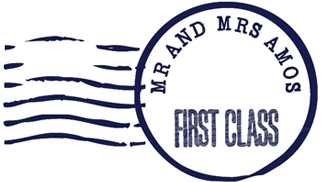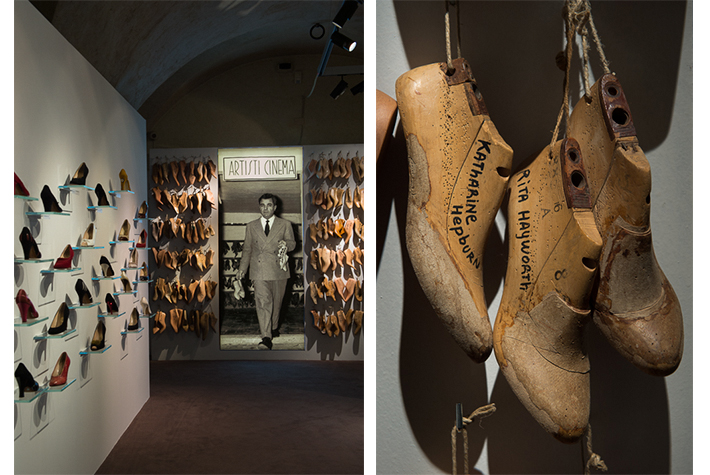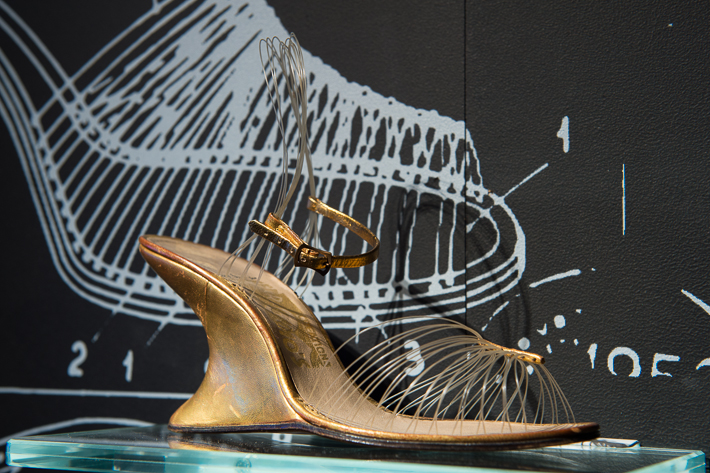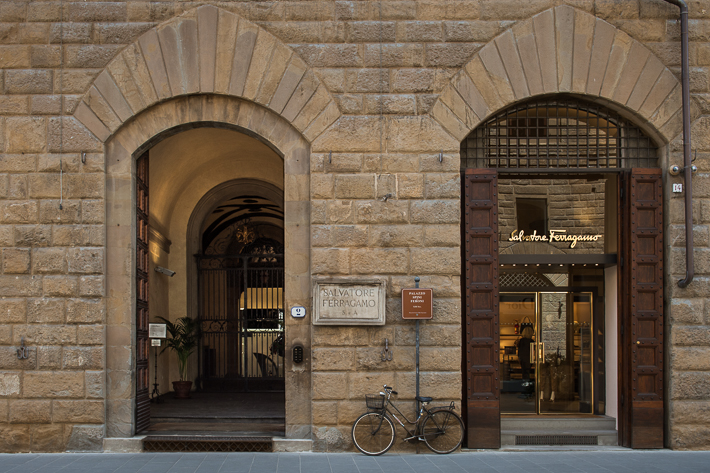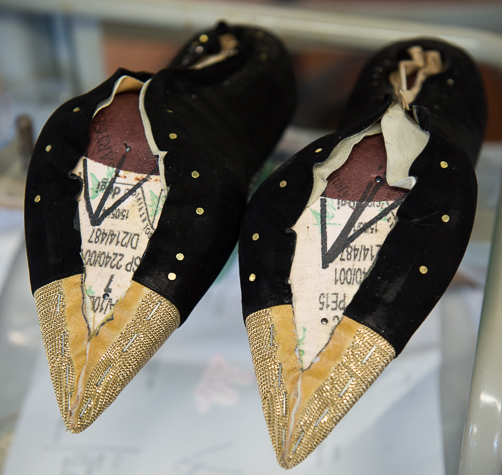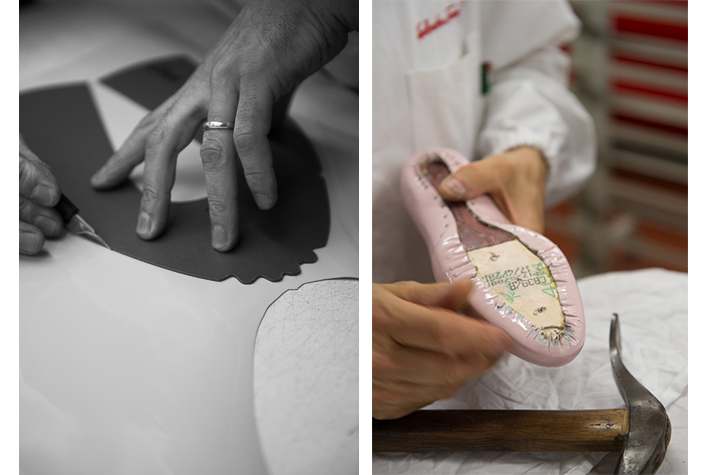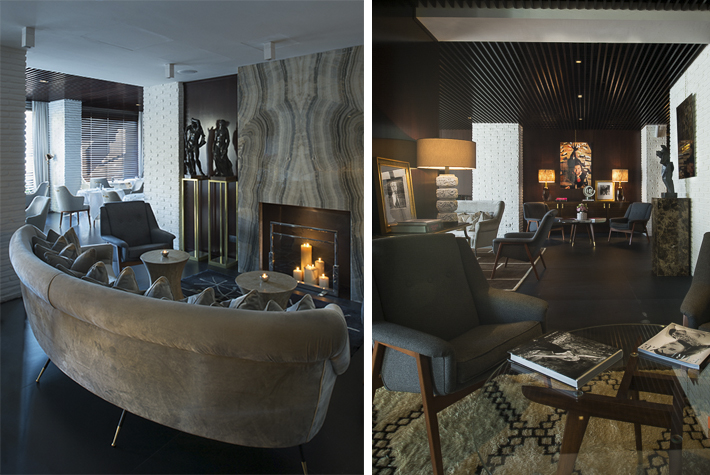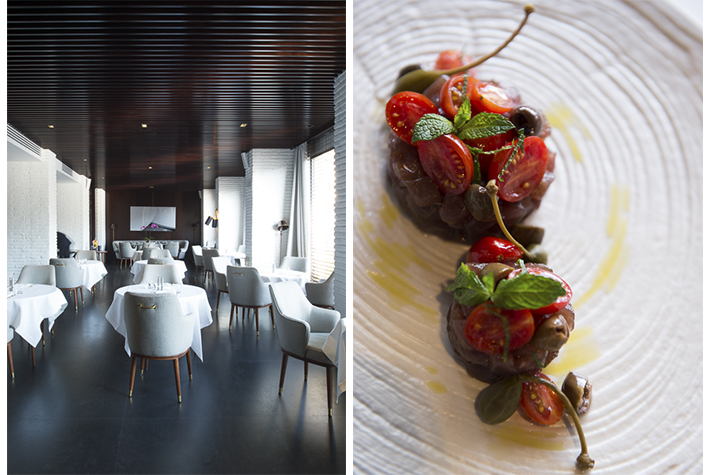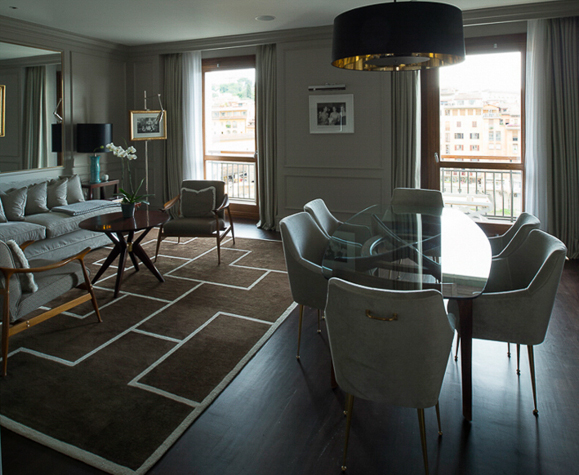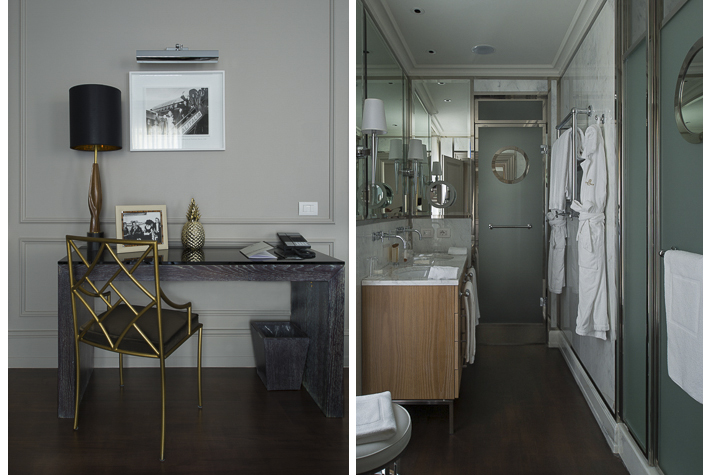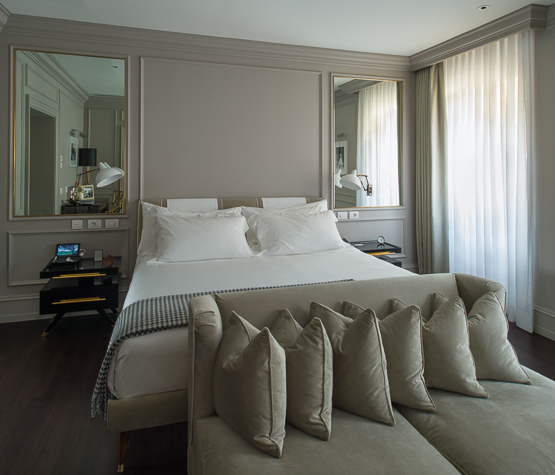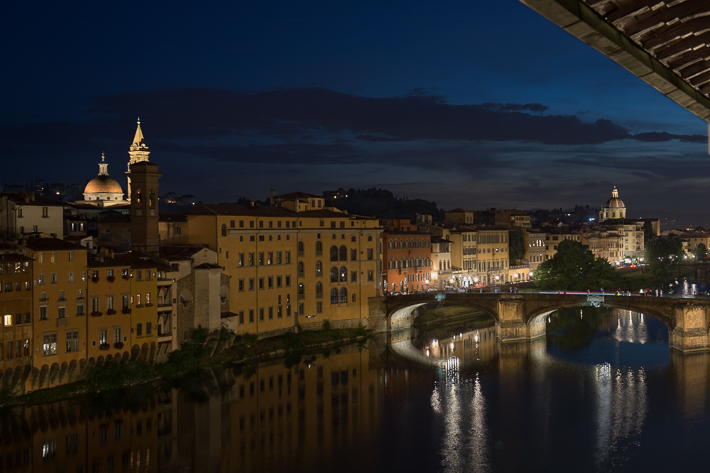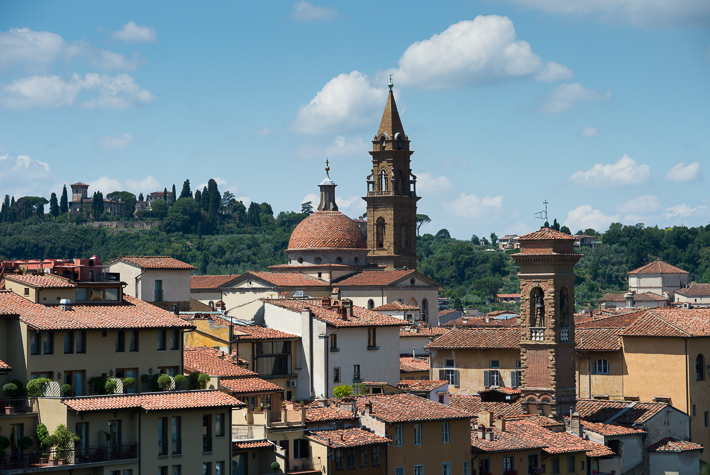The Shoemaker’s Hotel
Salvatore Ferragamo's legacy is in good hands in Florence
Salvatore Ferragamo
liked to call himself, humbly, a ‘shoemaker.’ And yet he was undoubtedly the most innovative shoe designer the world has known, inventing such classics as the cork wedge-heeled shoe and the ‘cage heel’, a hollow heel encrusted with rhinestones.
He was the first Italian to export shoes to the world and his faithful customers included most of the great stars of Hollywood such as the Audrey and Katharine Hepburns, Greta Garbo (who ordered 70 pairs in different colours) and Marilyn Monroe, as well as royalty and aristocrats from all over the globe. Avowedly apolitical, he made shoes for Eva Braun and Eva Peron and boots for Mussolini.
Ferragamo is closely associated with the Italian city of high culture, Florence. In the 1930s he bought the Renaissance-era Palazzo Feroni Spini, which to this day houses his museum, showroom, flagship boutique and corporate offices. Ferragamo has fourteen factories throughout Italy (all the shoes are still Italian-made) but the factory where his high-end product is made is in a suburb of Florence.
Although Ferragamo died in 1960, his descendants (he and wife Wanda had six children) still run the various arms of the business that Salvatore started in 1910 when he opened his first cobbler’s shop in his parent’s house at the precocious age of eleven. It’s fitting that Florence, with its great tradition of artisans, is still the seat of the company he built up over several decades, some of those years spent in California. Hollywood still comes to Ferragamo for shoes – today’s customers include Nicole Kidman, Angelina Jolie and Drew Barrymore.
One branch of the company, separate from the fashion business where Creative Director Paul Andrew reigns, is the Lungarno Collection, which operates hotels, suites and apartments in Florence, Rome and Tuscany, inspired by the refined craftsmanship of the region and Salvatore’s own devotion to the handmade. It is overseen by Salvatore’s son Leonardo.
Portrait Firenze, a beautiful 34-suite hotel on the banks of the Arno River, a shoe’s throw from the Ponte Vecchio is the second hotel in the ‘Portrait’ collection – the first, in Rome, has only 14 suites.
The Portrait Firenze’s connection is to Florence and the city’s fashion legacy.
Anyone who has stayed at Portrait Roma will know that the hotel connects to the Ferragamo legacy in its collection of memorabilia compiled from the Ferragamo archives, including sketches of shoe designs and pages from order books, which have been framed and line the walls of the elegant, modern hotel. The 34-suite Portrait Firenze’s connection is to Florence and the city’s fashion legacy. Art historian Nina Screti has combed the Alinari photo archives, which features a collection of 1950s fashion reportage shots, and the archives of Florentine couturier Giorgini for black and white images of fashion parades and galas held in the city from the 1950s to the 1970s, which are framed throughout the hotel’s hallways and in guest suites. The hotel is a ‘portrait’ of stylish Florence in this way.
Three of the Lungarno Collection’s hotels cluster together in a neighbourhood near the bridge. Behind Portrait Firenze is the Gallery Hotel Art, a contemporary hotel that features modern portrait photography and temporary installations (the current work by Simone D’Auria, has life-sized plaster nudes with animal-heads climbing up the walls of the hotel, to the delight of tourists.) Adjacent is the Continentale, the hip little sister, with urban-cool interiors and a spectacular rooftop bar with views across Florence. Directly across the Arno, a fourth hotel, the Hotel Lungarno, perches on the river bank, a more classic five star hotel.
Portrait Firenze offers a premium experience before check in, when guests are sent a pre-arrival email asking their preferences for everything from pillow softness to what they’d like in their honour bar. On arrival, guests are greeted by concierges in a lobby that’s more like a living room, and offered a drink or coffee if they’d like to sit and chat with the concierges about the city or any requirements or expectations they have during their stay. (Check-in can also take five minutes, if a guests want to dispense with formalities.) Nothing is standardised – any request is seen as a challenge, not a limitation. Concierges are encouraged to constantly go out and try the best of the city so they can pass on the information to guests. The result is friendly service that’s far from stuffy.
Michele Bönan’s interiors are extremely chic – a palette of pale greys and dark timber floors with some black lacquer and gold or brass highlights. We have a fifth floor suite with a long terrace where we can sit and look over the river and the Ponte Vecchio – a view that’s better from a height, away from the hoards of tourists that clog Florence in summer.
The suite has an impressively spacious residential living room-dining room combination, an entrance hall, powder room with bath, master bedroom, marble ensuite bathroom with Ferragamo amenities and two separate walk-in wardrobes. Even the room keycard is elegant, attached to a square of black plastic, which I slip over my wrist like a bracelet when I go down to the hotel’s superb Caffé Dell’Oro (named for the goldsmiths on the Ponte Vecchio) for breakfast. Framed photographs from the 1950s couture showings at Florence’s Sala Blanca are dotted around the rooms, some arranged on tables or desks, others spotlit on stands. There are some charming candid photographs of fashionable Florentines as well, as if they’re portraits from a private collection.
The rooms are sumptuous, but modern, mixing vintage styling with the latest technology, including bluetooth connectivity throughout. There’s a mini iPad loaded with local information and two cinematic TV screens with many television and film options. In winter, a gas fire can be lit in the marble fireplace and there are grey and white houndstooth blankets for extra cosiness. It’s all quite sublime.
Ferragamo’s personal history is as remarkable as some of the wildly inventive platform shoes he invented.
Salvatore Ferragamo is never far away. Photographs of him with famous clients are hung throughout the hotel. Ferragamo’s personal history is as remarkable as some of the wildly inventive platform shoes he invented. He moved to the United States in 1914 at the age of sixteen, encouraged by a brother-in-law who was working in a shoe factory in Boston. But disgusted by the poor quality of factory-made shoes, he moved to Santa Monica, California, where two other brothers had been working as handymen at the American Film Company.
Salvatore started making his handmade boots for the costume department. When the film industry moved to Hollywood, he relocated with it, becoming the favourite shoemaker of silent-era stars such as Clara Bow, Jean Harlow, Theda Bara and Gloria Swanson. He became enormously rich by his humble standards but his desire to increase production of his handmade shoes led him to Florence, where he knew he could find enough master craftsmen to make his designs. His export business was a huge success until the Depression hit in 1933 and he went bankrupt. But through incredible resolve, he built the business back up again and managed to keep afloat through other economic disasters such as those caused by World War II.
The Ferragamo Museum, housed in the basement of the Palazzo Feroni Spini, is not to be missed, not just for those interested in shoes, but by anyone fascinated by art and artisanship. He was the first shoemaker to discover that the weight of the body when standing drops vertically on the arches of the feet, causing him to invent a lightweight steel reinforcement of the bridge of the shoe.
The archives of the museum, which opened in 1995, contain 14,000 pairs of shoes, of which 50-70 pairs are displayed at a time, mounted on a wall. These include the ‘Rainbow’ platform shoes created in honour of Judy Garland in 1939, the ‘Unica’ boot of 1939, a black and cream suede wedge that looks totally current, and the ‘Invisible’ sandal, with straps made of invisible nylon, which won him the prestigious Neiman Marcus Plaque for Distinguished Services to Fashion in 1947.
Also on display are the wooden lasts of many of his famous clients, which included Bette Davis (size 4 1/2 B), Marlene Dietrich (5B), Audrey Hepburn (7 1/2 AAA) and Lauren Bacall (9AAA.) A tiny pair of models for a baby hang with them – these are recent additions, made for Prince George Alexander. Another display shows his models in red with various heel heights – Ferragamo doesn’t made a heel higher than 11 cm, which is the point where equilibrium is challenged. Guests of Portrait Firenze can arrange a private visit to the Ferragamo Museum outside visiting hours.
Ferragamo still makes all its shoes in Italy. The factory for high-end production is based in a suburb of Florence, about 30 minutes drive from the museum and flagship store. These days machines are used for some of the process, but about 90% of work is still done by hand. Only about forty pairs of shoes are finished each day on the high-end production line.
When we visit for a private tour, the workshop is busy with expert shoemakers cutting, sewing, stretching, trimming, sanding, tacking and hammering. Depending on the model, there can be 220 stages of production from choosing the leather to packing the finished shoe in a box. The 1939 Rainbow shoe is still made in a limited edition. It has twenty separate pieces, all of it constructed by hand, and costs €1600.
In his autobiography Shoemaker of Dreams, Salvatore writes, “I love feet. They talk to me. As I take them in my hands, I feel their strength, their weaknesses, their vitality.” Watching the workers cradle the shoes as they carefully fashion them, you know Ferragamo’s legacy is still in good hands.
Portrait Firenze Reservations.
Mr and Mrs Amos were guests of Portrait Firenze and drove to Florence courtesy of Drive Away Holidays, which offers discounted self-drive options in more than 130 countries. Visit www.driveaway.com.au or call 1300 723 972.
